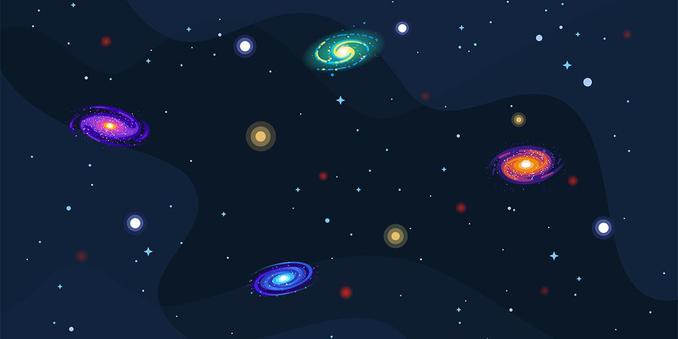#NASARoman will track cosmic changes over time in unprecedented scale and clarity. Discover the dynamic universe with Roman. Credit: NASA, STScI, Caltech/IPAC.
https://www.youtube.com/watch?v=i4TDwzti0T4
#NASARoman
How are we preparing for the launch of #NASARoman?
Hear from three team members as they share what makes the Roman mission unique, how they’re preparing future users of the telescope data, and the importance of thermal vacuum testing: https://bit.ly/4iVm4rp
Find your favorite videos from the Hubble, #NASAWebb and #NASARoman space telescope missions on STScI’s YouTube account. We’re adding more science videos every week!
https://www.youtube.com/channel/UCQXVf-94-RV7NVTOhVCNTiQ
One thing is true for both stars and humans: We slow down as we age. Learn how #NASARoman will pinpoint stars’ ages by watching how quickly they spin.
https://www.stsci.edu/contents/news-releases/2024/news-2024-203
#NASARoman will calculate the expansion rate of our universe by searching for gravitationally lensed supernovas, which are exceedingly rare events.
https://www.stsci.edu/contents/news-releases/2024/news-2024-202
#NASARoman will look for signs of dark matter in the gaps of stellar streams. These trails of stars form at the edge of galaxies due to gravity ripping apart globular star clusters. Spaces between the stars can indicate the influence of dark matter.
https://www.stsci.edu/contents/news-releases/2024/news-2024-201
Ready for some fireworks? 💥 #NASARoman will scan the sky for kilonovas, some of the most extreme events in our universe.
https://www.stsci.edu/contents/news-releases/2022/news-2022-049
With #NASARoman’s high resolution and fast survey speed, it will be able to view our universe’s during a time that scientists like to call “cosmic noon”. https://www.stsci.edu/contents/news-releases/2022/news-2022-018
📹 Subscribe to the Space Telescope Science Institute on YouTube! We perform the science operations for Hubble, lead the science and mission operations for #NASAWebb, and will perform parts of the science operations for #NASARoman: www.youtube.com/@spacetelescopevision #AAS245
#NASARoman: The next great space telescope will study distant galaxies and faraway planets from an orbital outpost about a million miles from Earth. But first it has to be put together, piece by piece, in a cavernous chamber at the NASA Goddard Space Flight Center in Greenbelt, Maryland.
https://wapo.st/40dmDFh
Imagine a telescope that can perform 200 Hubble Ultra Deep Fields in near-infrared light at once. #NASARoman is up to the task.
https://hubblesite.org/contents/news-releases/2021/news-2021-003
#NASARoman is on track to launch no later than May 2027! Recently, the Coronagraph Instrument, Optical Telescope Assembly, and Wide Field Instrument were attached to the telescope’s Instrument Center: https://go.nasa.gov/3ZQSnB1
Here's the plan...
1. Discovery of Earth mass primordial black holes
2.
3.
4. Black Hole Starships
Scientists predict that #NASARoman could find a class of “featherweight” black holes that has so far eluded detection. Discovering these tiny objects would have an enormous impact on physics and astronomy: https://go.nasa.gov/4cc1bEF
The upcoming #NASARoman telescope will be able to survey the sky 1,000 times faster than Hubble. Dr. Ori Fox will discuss the details of the Roman mission, with a focus on potential studies on the discovery of new planets—TODAY at 8:00 p.m. ET.
https://www.youtube.com/live/NtWl9a6NQMw
With #NASARoman, astronomers are preparing to become galactic archeologists. Using Roman’s wide field of view, they will see ancient galaxy structures, uncover the history of galaxy formation, and gather clues about the nature of dark matter: https://bit.ly/46i7xRJ
🌌 Unraveling the Mysteries of the Early Universe! 🔭 NASA's Roman Space Telescope embarks on a quest to hunt for Primordial Black Holes from the Dawn of Time. 🌌🕳️ #PrimordialBlackHoles #NASARoman #CosmicMysteries #EarlyUniverse #SpaceTelescop
#NASARoman is slated to launch by May 2027, where it will begin its study of numerous astronomical objects and events. Its surveys will complement existing telescopes, like Hubble and #NASAWebb, as well as future missions. (7/7)
Watch the full workshop: https://bit.ly/49ZKGLA
By observing unique dynamic phenomena, such as tidal disruption events, #NASARoman will help to clarify and characterize the chaotic environments in galaxies. It can also help astronomers locate the sources of some gravitational waves for further study. (6/7)
#NASARoman will use many methods to measure the effects of dark matter and dark energy on galaxies in our universe. For example, by observing differences in brightness between supernovas, we can measure how fast galaxies are moving as the universe expands. (5/7)
